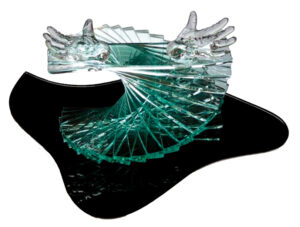In the summer of 1990 the Canadian military faced off against Mohawk Warriors between the village of Oka and the community of Kanehsatake, 53 kilometres west of Montreal, Que. This led to a 78-day armed siege, the most violent and consequential clash between indigenous people and the Canadian state in modern times.
See the main story, “Oka: 25 year later.” See below for more on the events of the crisis and updates on what has happened since then.
Photos
Oka films online
Interview with Alanis Obomsawin
Surprise reconciliation
National chief reflects on Oka
Mennonite involvement in the Oka Crisis
Photos
View the Montreal Gazette photo gallery “Photos: Looking back at Oka.”
Oka films online
Alanis Obomsawin's four NFB films about the 1990 Oka Crisis stand as a definitive, dramatic and disturbing documentation of an essential chapter in Canadian history. The footage is raw, candid and jarring. They can be viewed online:
Kanehsatake: 270 Years of Resistance (1993, 119 min.)
This film tells the story of the Oka siege from both sides of the barricades.
Rocks at Whiskey Trench (2000, 105 min.)
This film focusses on Kahnawake—the Mohawk community 70 km from Oka—where Warriors blocked a major bridge into Montreal and a white mob responded by pelting a convoy of Mohawk community members with rocks as police looked on.
My Name Is Kahentiiosta (1995, 30 min.)
This is a portrait of a soft-spoken Mohawk mother who spent time behind the barricades with her children.
Spudwrench — Khnawake Man (1997, 58 min.)
This is a portrait of Randy Horne (“Spudwrench”), his community of Kahnawake, and the famous Mohawk ironworkers. Horne was the Mohawk Warrior beaten by soldiers at the Oka siege.
Interview with Alanis Obomsawin
Now 82, Alanis Obomsawin is a celebrated filmmaker from the Abenaki Nation. For more than 40 years, as a director with the National Film Board, she has told the stories of indigenous people in Canada. For her work, she received the Governor General’s Performing Arts Award for Lifetime Artistic Achievement in 2008. That year she was also honoured with a special retrospective at The Museum of Modern Art in New York City.
When her film about the 1990 Oka Crisis came out, the response was decidedly cool. Initially, CBC wouldn't show the film. When the film was shown at festivals in Canada, after premiering in the U.K., Obomsawin says she received a lot of “bad publicity” from the media in Quebec. Eventually, CBC relented, subsequently airing the two-hour film many times.
Speaking by phone from Montreal, Obomsawin says she is happy she did the film. In her subsequent travels to First Nations across Canada she says people often express gratitude for the stand the Mohawks took, saying that governments have treated them differently since.
She believes the Oka Crisis was a turning point for the country. And she was there to provide an intimate glimpse into life behind the barricades—the tremendous tension, the tactical considerations, and the tender moments: a wedding, a badly wounded warrior, a mother singing a lullaby to her child around a fire as a military chopper hovers overhead.
While Obomsawin speaks with deep admiration for the courage and dignity of the Warriors and their supporters, her film does not idealize them. It shows their breaches in discipline, their anger and the efforts of spiritual leaders to contain the aggression of some of the younger men.
The footage she obtained is all the more valuable because media access was limited both by the military and by the sheer danger of the situation. For a time she would sneak in and out of the Mohawk camp. Other times she would endure hassles from police, soldiers and white people in Oka, who mistreated her for being indigenous.
For a time she slept outdoors under a crude shelter made of garbage bags hung over a cord between two trees. For a certain period, she was also frustrated by the rigid control placed on her by the Mohawk media minder, though this later eased.
During the final siege at the treatment centre, her cameramen left out of fear, leaving her to use equipment she was not familiar with. Everyone was on edge, and she says she knew a single shot could have ignited a deadly firestorm. She thought about the seven kids in the camp and about what would happen with her own daughter if she were shot.
Obomsawin is currently working on two films, both about treatment of indigenous children. She also speaks frequently to university classes and other groups. Emotion overtakes her as she shares of the vision and pride she sees in indigenous young people today, people who know who they are and will not settle for a life of dysfunction.
Last year Obomsawin became the first Indigenous filmmaker to have her work—a film called Trick or Treaty? [https://www.nfb.ca/film/trick_or_treaty]—included in the prestigious Masters program at the Toronto International Film Festival.
Surprise reconciliation
“A sister's grief bridges a cultural divide” [http://www.cbc.ca/news/canada/a-sister-s-grief-bridges-a-cultural-divide-1.971486] is the incredible CBC account of how a sister of the police officer killed in the raid at Oka unexpectedly encountered the Mohawks of Kanehsatake in a Montreal church.
National chief reflects on Oka
In 2010, then chief of the Assembly of First Nations, Shawn Atleo, wrote about the 20th anniversary of the Oka Crisis in The Globe and Mail. See “Oka, 20 years later: The issues remain.” [http://www.theglobeandmail.com/globe-debate/oka-20-years-later-the-issues-remain/article1386915/]
Excerpts:
Progress has been painfully slow and scattered. Despite endless studies, the challenge remains to quicken the rate and pace of change and to accelerate progress, as the courts have mandated, on reconciliation and implementation of our constitutional and human rights. . . .
No one wants to see another Oka—least of all first nations. When we reflect on Oka, the issue should not be one of blame but of the need to work together to resolve the many outstanding issues.
Mennonite involvement in the Oka Crisis
Among other Mennonite involvements at Oka, widely regarded mediator John Paul Lederach, who was working with Mennonite Central Committee at the time, was invited by Mohawk leaders to serve as a resource to them in negotiations with government. Lederach reflected on the experience in an article published in a special spring 1991 edition of The Conrad Grebel Review.
For much of the 78-day siege Lederach was in close contact with the Mohawk Nation office, traditional leaders and the Kahnawake Warriors. In analyzing the conflict, he noted an “historic context of longstanding frustration bordering on despair.” Violence, he noted, “becomes the act of the voiceless seeking a voice,” though the Mohawks would say governments were the instigators and aggressors.
One of Lederach's main points is that the important underlying issues got lost in the stand-off: “To the governments the Mohawk Warriors and barricaders were criminals and terrorists. To the Mohawks the governments and their enforcement apparatus were totalitarian racists. The focus was increasingly on people and personalities rather than on issues and fundamental problems. . . . Increasingly, the conflict was conceived as a battle to be won rather than as a problem to be solved.”
Lederach continues: “[I]n the end and for all practical purposes the only channel of negotiation was a phone line between an army captain and the Warriors at the treatment centre over the issue of surrender. . . . The conflict was defined almost exclusively in win/lose terms, which ultimately meant that the side with the 'bigger stick' was able to force its preferred solution.”
He also noted that the struggle was as much a “struggle for the hearts and minds of the public” as it was a battle for land.
Meanwhile, on the ground Robert Martin-Koop and John Docherty, two Quebec Mennonites, were part of an interchurch group that sought to provide a pastoral presence on a rotational basis at the community centre in Kanehsatake during the final siege. Martin-Koop and his wife Debby, who was with MCC, had been in Quebec since 1979. Docherty was the director of the Mennonite House of Friendship and is now minister at Montreal Mennonite Fellowship.
Their intent was to be a supportive, pastoral presence for community members just up the road from the stand-off. They kept an eye on police checkpoints, checked in on people in their homes, assisted with bringing food in, and spent time at the community centre. It was a “very significant and in many ways a very troubling event” recalled Martin-Koop, speaking by phone from his home in Winnipeg.
Martin-Koop recalled the “surreal setting” his first time into the area. Barbed wire was strung along the roads, helicopters flew overhead, military boats patrolled the lake adjacent to the community and military and police vehicles were all over the place. He recalls an armoured vehicle just sitting in a field with a young man perched on top of it holding a heavy machine gun pointed at the forest. Martin-Koop remembers wondering, what's he waiting for?
It was a traumatic time for the community. In addition to the tension of the siege, soldiers and police often subjected community members to searches and delays when they tried to come and go. Martin-Koop says people also had to contend with military helicopters that would hover over at night aiming searchlights into houses, “seemingly just to harass people.” And of course, the people “never knew what would happen next.”
Martin-Koop and Docherty say they were warmly received by the local people, while reaction within the Mennonite community was predictably divided.
While Martin-Koop still has a piece of barded wire he picked up at Oka, Docherty says the follow-up between Mennonites and Mohawks has been limited since 1990. “After the crisis subsided, we sort of moved on,” he says of the Mennonite community, which was, and is, quite focussed on refugee issues.
Mennonite Central Committee was involved as well, communicating with government officials, attempting (unsuccessfully) to organize a hymn-sing near the barricade, while also dealing with constituency push-back from people not supportive of the Mohawks.







Leave a Reply
You must be logged in to post a comment.